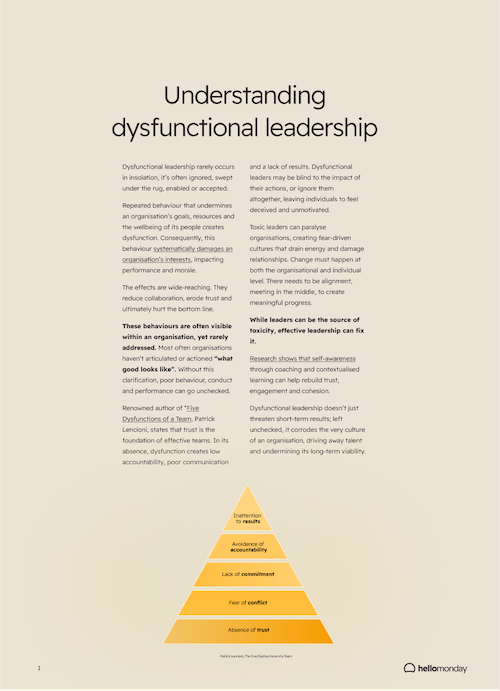resources
/
Guides and ebooks
Dysfunctional leadership rarely occurs in insolation, it’s often ignored, swept under the rug, enabled or accepted. Most often organisations haven’t articulated or actioned “what good looks like.”
High-performing organisations draw a clear line in the sand for what “good” looks like, defining performance and behaviour at every level. Dysfunction thrives when communication breaks down, expectations are unclear or behaviour goes unaddressed.
Individuals often know dysfunction is happening but feel blocked by fear, lack of support or unclear escalation paths. And with this, many haven’t seen effective leadership in action and lack the tools to have tough, behaviour-based conversations.
Leaders need to be clear and confident in addressing unacceptable behaviour. This requires a shared understanding of acceptable conduct, personal accountability and strong support systems for leaders.
Preventing dysfunctional leadership is far more effective, and less damaging, than trying to repair it once it’s taken hold. Yet many organisations only act after a crisis has emerged.
Organisational change only works when collective appetite meets individual accountability, both need to align and meet in the middle. We often default to managing performance because it’s easier to measure, but behaviour is where culture lives and dysfunction grows.

